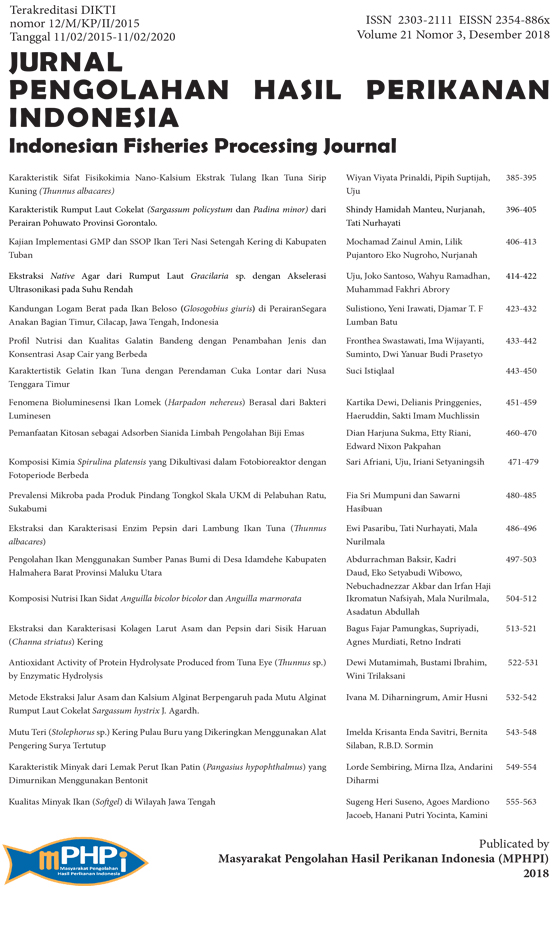Physicochemical Characteristics of Nanocalcium Extract from Bones of Yellowfin Tuna (Thunnus Albacares)
Abstract
Fish bone calcium is known to have good bioavailability and can be used as a natural calcium source. This study was aimed to compare the physicochemical characteristics of nano-calcium from yellowfin tuna (Thunnus albacares) obtained by three different extraction methods: milling, acid and alkaline. The research was divided into three stages: preparation of bone powder, production ofnano-calcium from fish bone and characterization of the physicochemical properties of bone powder and nano-calcium. Acid extracted nano-calcium was found to have better properties as compared to that extracted by milling and alkaline as indicated by the degree of whiteness 92.61%, moisture content 0.33%, ash 99.03%, protein 0.19%, fat 0.22%, particle size 259 nm, calcium content 83.25% and phosphorus 9.65%. The Fourier Transform Infrared (FTIR) spectra profiles indicated the presence of phosphate group (PO43-) suggesting the nano-calcium was in the form of calcium phosphate apatite.
Authors
PrinaldiW. V., SuptijahP., & UjuU. (2018). Physicochemical Characteristics of Nanocalcium Extract from Bones of Yellowfin Tuna (Thunnus Albacares). Jurnal Pengolahan Hasil Perikanan Indonesia, 21(3), 385-395. https://doi.org/10.17844/jphpi.v21i3.24708
Authors who publish with this journal agree to the following terms:
- Authors retain copyright and grant the journal right of first publication with the work simultaneously licensed under a Creative Commons Attribution License that allows others to share the work with an acknowledgement of the work's authorship and initial publication in this journal.
- Authors are able to enter into separate, additional contractual arrangements for the non-exclusive distribution of the journal's published version of the work (e.g., post it to an institutional repository or publish it in a book), with an acknowledgement of its initial publication in this journal.





